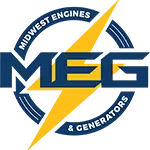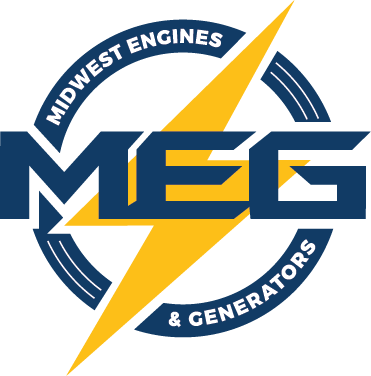When the power goes out, businesses can face serious setbacks. Operations halt, deadlines get pushed back, and frustration grows, but towable generators can change the whole picture.
Having reliable backup power can really make a difference for industries and so many different lines of work that use mobile power, because they can avoid significant losses. For many job sites, towable generators serve as that mobile, reliable energy source to run things even without grid electricity.
Table of Contents:
- Key Considerations When Sizing Towable Generators
- How to Assess Generator Features and Options
- Maintenance Practices for Sustained Towable Generator Performance
- Planning for Proper Towable Generator Transportation and Positioning
- Meeting Compliance Demands and Regulatory Requirements
- Frequently Asked Questions (FAQs)
- Conclusion
Key Considerations When Sizing Towable Generators
Selecting the right size towable generator is critical. This involves thinking about total power demands.
First you might want to figure out all equipment needing power from the diesel generator. The total wattage and starting wattage of those things will determine generator sizing, because the wrong sizing, leads to overloads or wasted capacity.
Understanding Wattage Requirements
Know your wattage, the total running wattage of everything needing to stay energized during a disruption is part of this. Also essential to grasp, surge wattage needed on equipment startup – which goes beyond ordinary operation demands.
This number can surpass standard runtime watts substantially. Understanding and account for this avoids the problems caused from temporary peaks overwhelming power capacity when a motor comes alive, because this causes a sudden demand for power.
Fuel Type Choices: Advantages of Diesel Generators
There are a few fuel type choices, like; natural gas, liquid propane and dual fuel. But, for heavy-duty work, towable diesel generators provide several compelling strengths. Their engines hold up for long timeframes under intensive usage, while the fuel efficiency helps manage operational expenses.
Diesel generators last long with rigorous workloads. You have to realize though, staying on top of maintenance extends reliability.
How to Assess Generator Features and Options
Picking out the correct towable generator setup also involves closely watching specific capabilities. Evaluating phase voltage capabilities and configurations and evaluating built-in safety mechanisms prove vital during selection processes.
These are two key areas to consider, among the many options and considerations.
Evaluating Phase Voltage Capabilities and Configurations
Matching phase voltage ratings correctly proves indispensable. Choices span single-phase models up through three-phase models providing expanded output ranges.
Single-phase generators generally suit simpler requirements. Three-phase equipment accommodates more industrial applications where power needs step up significantly, because of larger or more intensive tools, machines and processes. Align generator capability to demands now plus headroom factoring in future expansion potentials.
Importance of Integrated Safety Mechanisms
Safety takes prominence, with integrated safeguards defending both people along with sensitive gear being supplied. Automatic transfer switches make cutting over to standby seamlessly, minimizing transition when grids die.
You need built-in defenses checking problems before emerging as significant risks, because the right safety training gives peace of mind too when depending on consistent power delivery.
Maintenance Practices for Sustained Towable Generator Performance
Ongoing maintenance directly impacts longevity. Adhering carefully to upkeep recommendations from generator manufacturers optimizes performance for the life of generators.
Scheduled Preventative Maintenance Checks
Scheduled check-ups stop issues. These services watch fluid states like checking for leaks, topping off oil levels, confirming coolant capacities. These maintenance check-ups also address parts, including inspections evaluating generator parts, changing out worn filters, tightening loose components.
Catching deficiencies keeps small concerns becoming huge headaches requiring unplanned downtimes.
Fluid Analysis Importance
Fluid analysis detects many pending generator problems that we sometimes can miss visually. Sampling fuel and oil at planned frequency gives advanced notification of abnormal metal particles signifying unusual wear. Analyzing fluids also spots contaminates needing remediation earlier.
| Maintenance Check | Diesel Generators | Natural Gas Generators | Liquid Propane Generators |
|---|---|---|---|
| Check fuel filter | Every 200 hours | Every 500 hours | Every 300 hours |
| Inspect fuel lines for leaks | Every 100 hours | Every 200 hours | Every 150 hours |
| Check coolant levels (liquid-cooled models) | Every 50 hours | Every 50 hours | Every 50 hours |
| Change oil and filter | Every 100 hours | Every 500 hours | Every 500 hours |
Planning for Proper Towable Generator Transportation and Positioning
Correct generator transport practices directly impacts worker protection, along with protecting machine functionality. Careful job site placement also avoids problems cropping up down the line too. Think through positioning prior to settling gear, and the level of light compaction needed.
Think of the surface and level of compaction, also access and ground issues before placing towable generators.
Adhering to Safe Transport Protocols
Before hitting roadways, make sure generator frames withstand trailering stresses. Connections must hold secure through road vibration, avoiding anything shifting.
Make sure generator frames and tow attachments can handle travel vibrations and dynamic loading. This calls for examining tongue weight rating against capacity plus installing suitable brake system controllers. Using approved safety chain links keeps things under strict control with preventing problems, in transport.
Site Selection: Accessibility and Environmental Considerations
Site preparation helps enable convenient accessibility while factoring terrain issues for stable support. Clear paths of access allow hassle-free servicing, including any generator parts replacement.
Maintaining nearby air space enables enough airflow with exhausting hot gases efficiently too, since inadequate ventilation leads to efficiency losses and dangers from exhaust accumulations. Consider if the unit is air cooled or liquid cooled and how that impacts placement. Also think about utilizing pressure washers around the unit and if water could cause an issue with its placement.
If using other equipment, like compact track loaders, wheel loaders, backhoe loaders or compact wheel loaders, consider how the generator may need to be moved. Could light towers be impacted or other material handling equipment?
Meeting Compliance Demands and Regulatory Requirements
Operating towable generators brings along various legal, compliance commitments that are non-negotiable. Ignoring codes, from air quality rules, site permitting rules or certification stipulations brings unwanted complications through formal citations/penalties down the line.
Addressing Emissions Standards Mandates
Most regions impose defined pollution standards that limit permissible diesel exhaust releases into environments during generator use. Regulatory agencies carefully stipulate allowable contaminant concentrates dictating needed control strategies with maintaining good air quality levels locally, because failure leads to trouble.
Site Permitting and Required Certifications
Local jurisdictions typically require formalized permitting addressing temporary generator placement with noise compliance certifications that operators can deliver if challenged. Confirm needed documentation ahead versus confronting violations after setups causing project stoppages.
Keeping up to date with current regulatory updates with evolving certification protocols avoids compliance issues that otherwise halt work unexpectedly. Review any available service manuals for additional details.
Frequently Asked Questions (FAQs)
What are common uses for towable generators?
Towable generators are versatile and support various applications. Construction sites use them for powering tools and equipment.
Emergency response teams rely on them for temporary power during disasters. Outdoor events, like concerts, also depend on towable generators for electricity.
How does a transfer switch work with a towable generator?
A transfer switch safely shifts power sources from the grid to the generator. An automatic transfer switch detects outages and starts the generator. Then it transfers the electrical load.
Once grid power returns, the switch reverses the process. This keeps power continuous and safe. A manual transfer switch is also an option for hands-on control.
What kind of maintenance do towable generators need?
Regular upkeep keeps generators reliable. Check oil, coolant, and fuel levels often. Inspect for leaks or damage regularly, along with testing and cleaning all connections on things like transfer switches.
Also follow the manufacturer’s service schedule. Consider enrolling key staff in training courses for proper generator maintenance.
How can I find parts for my generator?
You can find a vast inventory of in-stock parts at Absolute Generator. Make sure to use the Parts Finder tool. The Part Finder Tool helps users shop parts for many different generator brands.
You’ll be sure to find what you are looking for.
Conclusion
Reliable electricity often decides getting critical infrastructure projects moving forward when working remotely, at a job site, or various site solutions. Selecting, operating, and servicing towable generators using solid planning approaches makes big impact.
Focusing on meeting specs accurately and following proper transport plus site selection practices allows seamless backup integration. With non-stop work zone energy delivery, from job site to job site, using proper power generation. Whether using a standby generator or a towable diesel generator, all are good options, depending on power needs.

